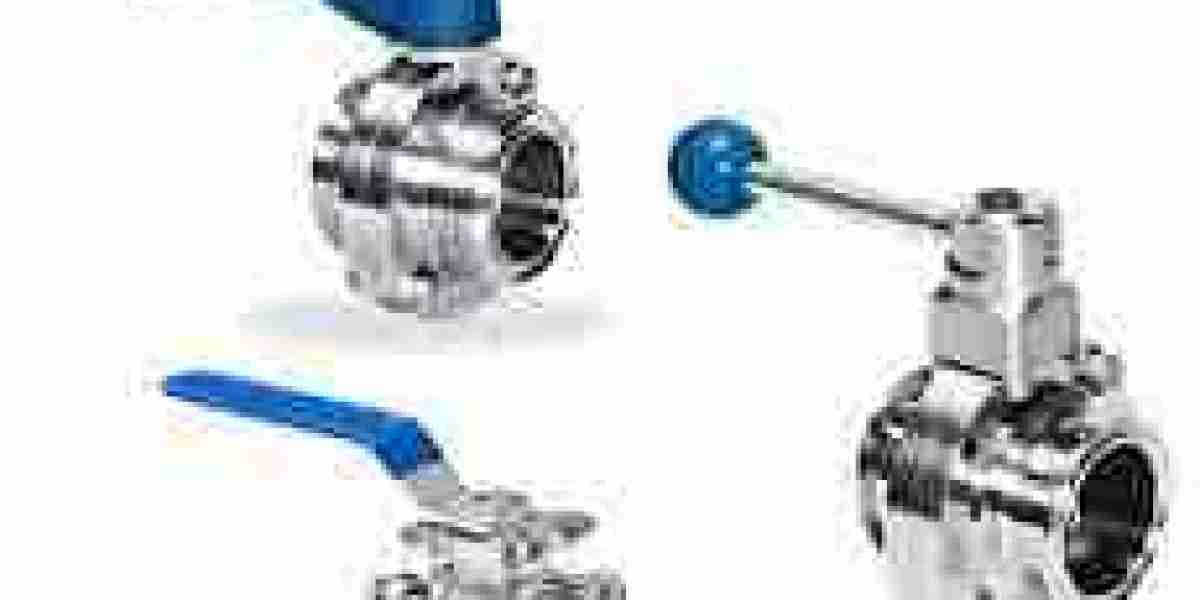In the pharmaceutical industry, where product purity, hygiene, and compliance are critical, the equipment used must meet the highest standards. One such vital component is the sanitary valve—specifically, stainless steel sanitary valves. These valves play a crucial role in maintaining the integrity of pharmaceutical processes by ensuring sterile, leak-free, and contamination-resistant flow control.
In this article, we’ll explore the importance, types, features, and benefits of stainless steel sanitary valves for pharmaceutical processing, along with industry standards and selection tips.
What Are Sanitary Valves?
Sanitary valves are specialized valves designed to prevent contamination in processes involving sensitive materials such as pharmaceuticals, food, and beverages. They are typically used in CIP (Clean-in-Place) and SIP (Sterilize-in-Place) systems.
These valves are engineered to be easy to clean, non-reactive, and compliant with strict hygiene standards such as GMP, FDA, and ASME BPE.
Why Stainless Steel?
Stainless steel is the material of choice for sanitary valves in pharmaceutical processing due to its:
Corrosion resistance (especially 316L grade)
Smooth surface finish that prevents bacterial growth
Durability under high pressure and temperature
Compatibility with aggressive cleaning agents
Non-reactivity with active pharmaceutical ingredients (APIs)
Among all grades, 316L stainless steel is preferred because of its low carbon content and enhanced corrosion resistance, especially in high-purity applications.
Key Features of Stainless Steel Sanitary Valves
Hygienic Design
With minimal crevices, dead legs, and smooth internal surfaces, these valves reduce the risk of contamination.Polished Surface Finish
Surface roughness (Ra) is kept below critical thresholds (typically < 0.4 µm) to avoid microbial adhesion.Tri-Clamp Connections
Easy-to-install and remove, making cleaning and maintenance simpler.FDA and USP Class VI Compliant Elastomers
The sealing materials (like EPDM or PTFE) meet pharma-grade regulations.Cleanability
Designed for full drainability and compatibility with CIP/SIP systems.Leak-Free Operation
Precision-engineered to prevent leaks, which is critical in sterile environments.
Types of Stainless Steel Sanitary Valves Used in Pharma
Different types of valves serve different purposes in pharmaceutical pipelines. Here's a look at the most common ones:
Sanitary Diaphragm Valves
Used for aseptic and sterile applications. Designed for zero dead leg and full drainability. Excellent for shutoff and throttling applications. Ideal for processes involving sterile water, WFI, and buffer solutions.
Sanitary Ball Valves
Suitable for on/off control with full bore design for unrestricted flow. Easy to clean and maintain. Not typically used for throttling but perfect for bulk transfer applications.
Sanitary Butterfly Valves
Lightweight and economical. Best for low-pressure applications and frequent flow control. Quick operation with minimal parts.
Sanitary Check Valves
Prevent backflow in pharmaceutical pipelines. Often used with water and gas lines. Available in spring-loaded or swing-type configurations.
Applications in Pharmaceutical Processing
Stainless steel sanitary valves are used in a wide variety of critical pharmaceutical operations, such as:
Sterile filling systems
Bioreactors and fermenters
WFI (Water for Injection) lines
Buffer and media preparation
CIP/SIP systems
Filtration skids
Sterile tank outlets
Sampling systems
Every step in pharmaceutical manufacturing—from ingredient transfer to final product filling—requires precise, contamination-free flow control, which these valves provide.
Compliance and Certifications
Pharmaceutical valves must comply with several international standards:
ASME BPE (BioProcessing Equipment Standard)
FDA CFR 21 Compliance
USP Class VI Compatibility for elastomers
3-A Sanitary Standards
EHEDG Guidelines for hygienic design
Working with certified valves ensures your equipment meets both regulatory and audit requirements.
Benefits of Using Stainless Steel Sanitary Valves in Pharma
Superior Hygiene
Prevents microbial contamination and ensures product safety.Regulatory Compliance
Meets the strictest industry standards, aiding in inspections and certifications.Operational Efficiency
Low maintenance, fast cleaning, and reliable performance reduce downtime.Long Lifespan
Corrosion-resistant and durable even under aggressive cleaning and sterilization.Versatile Use
Compatible with both liquids and gases in various pharmaceutical applications.Customization Options
Available with pneumatic or manual actuators, position indicators, drain ports, and more.
Tips for Selecting the Right Sanitary Valve
When choosing sanitary valves for your pharmaceutical plant, consider the following:
Flow media – Chemical compatibility with fluids or gases
Valve function – Shutoff, throttling, or flow diversion
Pressure and temperature ratings
Actuation type – Manual, pneumatic, or electric
Certifications required – Especially for FDA, GMP, or ASME BPE
Cleanability and maintenance requirements
Always consult with a technical expert or supplier to ensure optimal valve selection based on your process requirements.
Future of Sanitary Valves in Pharma
With the rise of biopharmaceuticals, gene therapies, and modular pharma plants, the demand for advanced sanitary valves is increasing. Manufacturers are now innovating with:
Single-use valves
Smart valves with sensors
Low-shear valve designs
Self-draining and fully drainable assemblies
These innovations will further enhance process safety, product quality, and automation in the coming years.
Conclusion
Stainless steel sanitary valves are not just components—they’re guardians of cleanliness, compliance, and efficiency in pharmaceutical processing. Whether it’s controlling the flow of WFI, managing sterile APIs, or maintaining ultra-clean environments, these valves form the backbone of pharmaceutical fluid control systems.
Choosing the right type of sanitary valve, ensuring it meets international standards, and partnering with a reliable valve supplier can significantly improve the performance and compliance of your pharmaceutical operations.








